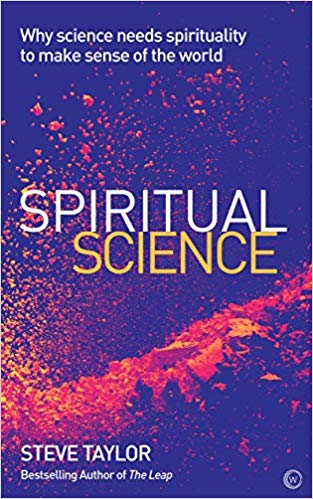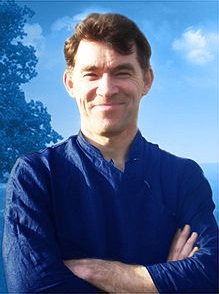Guest writer for Wake Up World
There are many different forms of anxiety, but it may be helpful to think in terms of three fundamental kinds: instinctive anxiety, traumatic anxiety and cognitive anxiety.
‘Instinctive anxiety’ is based on threats or dangers to our survival. This is what we experience while walking near the edge of a high cliff, in deserted city streets at night, or when someone verbally abuses us or threatens us with violence. We instinctively feel anxiety in such situations, as a warning to be on our toes, or to flee from the potential danger. Instinctive anxiety is healthy. It has evolved over tens of thousands of years of human history, and we probably wouldn’t be here without it.
‘Traumatic anxiety’ is related to traumatic life experiences (usually in early life) that have left behind some degree of psychological sensitivity and vulnerability. Traumatic anxiety arises very strongly when we face situations that remind of us of the original trauma — for example, when a person who experienced abandonment during their childhood starts a relationship as an adult, and finds that their fear of abandonment arises again, filling them with insecurity. Another example is an ex-soldier hears explosions or screams, which rekindles the trauma he experienced in conflict.
[pro_ad_display_adzone id=”110028″]
Finally, there is ‘cognitive anxiety.’ Sometimes this acts upon instinctive anxiety, picking up on dangers and inflating them. For example, fear of flying begins with an instinctive sense of danger, which for most people quickly fades away as they get used to flying. But for others, this instinctive fear is inflated by thoughts — for example, imagining that the plane might crash or that someone might open the emergency exit, picturing themselves five miles above the ground, remembering stories they’ve read about plane crashes… In a similar way, a person who is walking through the countryside as night starts to fall might imagine that wild animals are creeping towards them, or that people are waiting behind trees to attack them.
However, at other times, anxiety can be purely cognitive, without being based on instinctive anxiety. This type of cognitive anxiety is often based on the future, stemming from the anticipation of events that haven’t happened yet, or may not even happen. It is based on ‘what if?’ questions like ‘What will happen if I lose my job, or my wife leaves me? What if I mess up and make a fool of myself? What if I’m not able to cope? What if I take a risk too far and lose everything?’
Cognitive anxiety can also manifest itself in a very subtle way, as a kind of background sense of unease in our minds – a pervasive sense of restlessness caused by the constant activity of our minds. Whenever our attention isn’t occupied, our minds tend to chatter away in a random way. This constant ‘thought-chatter’ creates a fundamental disturbance inside us.
Of these three types, I would say that cognitive anxiety has the biggest hold over us. It turns instinctive fears into phobias that take away our freedom and happiness; it plagues us with a sense of insecurity that stops us taking risks; it stops us living authentically by making us fear failure and rejection. ‘What if?’ questions create imaginary fears of the future which keep us stuck in an unsatisfactory present. And more subtly, cognitive anxiety prompts us to spend our time with our attention focussed outside ourselves — spending hours watching television, or surfing the Internet — because we feel the need to escape from the constant disturbance of our thought-chatter.
Dealing with Anxiety
There’s really no reason for us deal with instinctive anxiety — as I’ve said, it’s healthy and natural. Traumatic anxiety can be helped and healed through therapy. For example, two contemporary therapies that have shown good results in alleviating post-traumatic stress or Acceptance and Commitment Therapy and EMDR (eye movement de-sensitization therapy).
But what about cognitive anxiety? Fortunately, there are also some effective methods to help alleviate it. For example, Cognitive-Behavioural Therapy works mainly by identifying thought-patterns that give rise to anxiety and phobias, and ‘replacing them’ with more rational and positive thoughts. However, in my view, there is an even more effective way of dealing with cognitive anxiety: transcending thought.
We all regularly have moments when anxiety and restlessness fade away and we experience a sense of ease, well-being and harmony. In these moments we’re free of the pressure to keep busy and the need for stimulation and acquisition – we rest at ease within ourselves and within the present moment.
These moments of ‘harmony of being’ – as I refer to them – usually happen when we’re quiet and relaxed and there’s stillness around us e.g. when we’re walking through the countryside, working quietly with our hands, listening to or playing music, after meditation, yoga or sex. The normal incessant chattering of our minds fades away, and rather than feeling separate, we feel a natural flow of connection between ourselves and our surroundings or other people.
These moments often occur accidentally, but the key to overcoming our cognitive anxiety is to make a conscious effort to slow down and quieten our thought-chatter. In fact, this one of the long term effects of meditation. Seasoned meditators may experience extended periods of complete mental emptiness during meditation, and in the long term, their minds will become permanently quieter (although it’s unlikely that they will be able to ‘stop’ their thought-chatter altogether.)
However, just as importantly, meditation (or mindfulness practice) enables us to become less identified with our thought-chatter. It helps us to stand back from our thoughts, and just watch them flowing by, as if we’re sitting on a river bank watching the river. Thoughts are fuelled by the attention we give to them — when we become immersed in them, their momentum increases. So this detachment itself has the effect of slowing down thought-chatter. It also means that we’re less vulnerable to the ‘emotional over-spill’ of negative thoughts. We’re able to say to ourselves, ‘Oh well, there goes another negative thought – I don’t have to pay attention to it.’
In this sense, meditation and mindfulness help us to transcend cognitive anxiety. This true of any type of meditation, but it’s also possible to use a meditation that is specifically designed to deal with cognitive anxiety. I will end this article by guiding you through a short meditation that I have devised.
A Meditation to Deal with Anxiety
When you are feeling anxious, trace your anxiety back to the beginning. Be aware of how it arose inside you. Most likely, even if it is linked to a specific situation or activity, it will have begun with a thought — perhaps an anticipation of danger, or a memory of failure. That thought will have quickly spawned a host of other thoughts, filling your mental space with turbulence, a swirling chaos of images and anticipations. Those thoughts trigger physical reactions inside you, a feeling of panic that seems to shiver through your veins and surge through your body.
Breathe deeply and slowly several times, keeping your attention on the air entering and leaving your nose, brushing the inside of your nostrils. Make each breath slightly longer and deeper than the one before. If your attention shifts back to your thoughts, keep bringing it back to your breathing.
Feel the energy of your being flowing through your body — trace it down through your arms, and into your hands and fingers, from your shoulders down to your chest and your stomach, down to your waist, into your upper legs, your knees, your lower legs and feet. Do this three times. Again, if your attention may keep returning to your thoughts, but keep bringing it back to your body.
Soon you will begin to sense some space inside you. Find a stable place, a vantage point, where you can stand still and watch the thoughts pass by without being carried away by them.
Be aware that you are not your thoughts; you are just the observer of them. Imagine that you’re sitting on a riverbank, watching the stream of your thoughts flow by. Be aware of the space between you and the thoughts.
Notice how the space between you and your thoughts expands. As it does so, a sense of calmness will begin to fill you. Centre yourself there — open yourself to the spaciousness inside you. Feel that calmness spreading through your whole body.
Slowly the turbulence will fade away. Soon your mind will be empty, like a clear sky after a storm has passed. And without the thought-chatter that triggers it, your anxiety will have faded away. Anxious thoughts may still arise, but you will be able to let them pass by without disturbing you, keeping yourself centered in the calm space of your being.
Spiritual Science
Steve Taylor’s new book, Spiritual Science: Why Science Needs Spirituality to Make Sense of the World, is available now. It offers a new vision of the world that is compatible with both modern science and ancient spiritual teachings. Highly recommended reading.
About the author:
Steve Taylor is a senior lecturer in Psychology at Leeds Beckett University, UK. His latest books in the US are The Calm Center and Back to Sanity: Healing the Madness of the Human Mind. He is also the author of The Fall, Waking From Sleep, and Out Of The Darkness. His books have been published in 19 languages. His research has appeared in The Journal of Transpersonal Psychology, The Journal of Consciousness Studies, The Transpersonal Psychology Review, The International Journal of Transpersonal Studies, and the popular media in the UK, including on BBC World TV, The Guardian, and The Independent.
Connect with Steve at StevenMTaylor.com.
Recommended reading by Steve Taylor, Ph.D:
- The Power of Forgiveness: The Transformational Effect of Letting Go of Resentment
- More Than a Chemical Imbalance – Why Depression Cannot Be Cured By Medication Alone
- Harmony of Being – Returning to Our True Nature
- Transcendent Sexuality — How Sex Can Generate Higher States of Consciousness
- The Power Of Silence
- Happiness Comes from Giving and Helping, Not Buying and Having
- Empathy – The Power of Connection
- Transcending Human Madness
- If Women Ruled the World – Is a Matriarchal Society the Solution?
- The Puzzle of Near-Death Experiences
[pro_ad_display_adzone id=”110027″]









